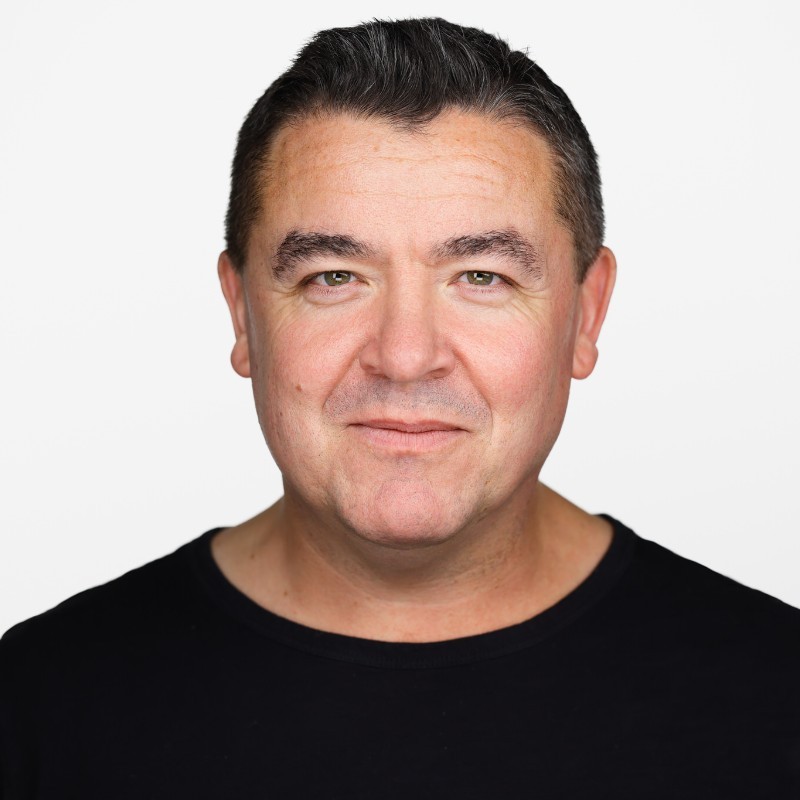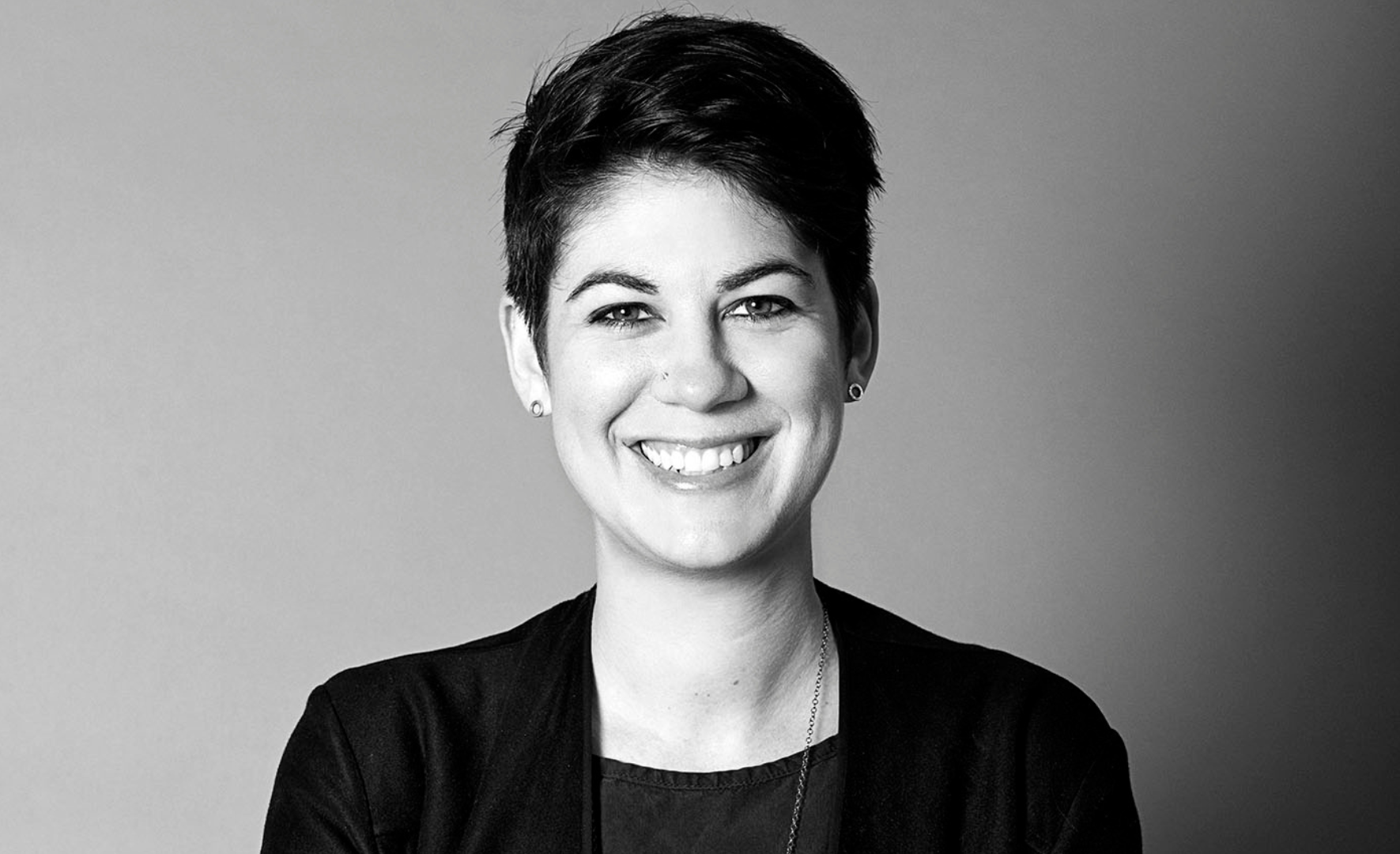Jonny is Co-founder of Studio Phoenix. He consults on brand positioning and communication, developing marketing initiatives to increase brand awareness and to drive growth.
Main Content
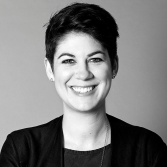
Designing for a Sustainable Future with Dr. Leyla Acaroglu: a synopsis
Shortly after Leyla sprang from the aptly named green room onto stage at The Royal Society of Medicine, she noted that her commute through London was ‘uncomfortably warm’, followed by a darkly humorous ‘it’s only going to get hotter….’.
Here are my key takeaways from the DBA’s recent event.
It’s real, but who cares?

Today, six of nine of our ‘planetary boundaries‘ for environmental self-regulation have been crossed with unknown but possibly catastrophic consequences for our natural world. An overriding global growth agenda has created an addictive consumption system with no value for nature, making money from ‘selling waste’ that consumes more resources than can be regenerated creating a zero-sum outcome. The same message delivered in Dr Suess’s ‘The Lorax’ a half century ago is now more than a cautionary tale.
Starting as a product designer, Dr Leyla Acaroglu (who is now a United Nations ‘Champion of the Earth’) had a formative experience that led to a powerful insight into the human mindset; why does one person care about the environment and another doesn’t?
Armed with this, she initially saw design as part of the problem until concluding that we need to be inside the system to change it, to understand the desired and undesired impacts of our choices and adopt ‘lifecycle thinking’ through a design mindset.
If not you, then who?
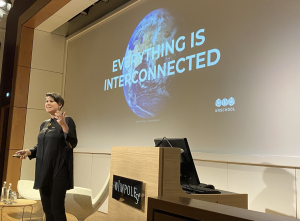 Asking ‘if you were accountable for your actions what would you change?’, Leyla highlighted the agency (power and influence) designers have. If united, we would have tremendous opportunity to disrupt existing systems and business models. ‘After all,’ Leyla reminded us, ‘we know how to manipulate people,’ but we need to close the knowledge gap without shaming others. Swivel Skills, a learning platform founded by Leyla to help educate and train business on circularity and sustainability is a good place to start.
Asking ‘if you were accountable for your actions what would you change?’, Leyla highlighted the agency (power and influence) designers have. If united, we would have tremendous opportunity to disrupt existing systems and business models. ‘After all,’ Leyla reminded us, ‘we know how to manipulate people,’ but we need to close the knowledge gap without shaming others. Swivel Skills, a learning platform founded by Leyla to help educate and train business on circularity and sustainability is a good place to start.
Flagging one of the systemic problems with design – that it doesn’t always interrogate the system it is working in fully, it just deals with the intended outcome – Leyla discussed how design innovation is often focused on consumer behaviours that are locked into the established consumption system. Her recommendation: we should suspend the need to solve these from the get-go and have deeper curiosity about the system itself.
With companies increasingly required to report into Environmental, Social and Governance (ESG) frameworks, design can be a key sustainability line item. From a design perspective we are uniquely positioned to do the appraisal and deliver more value than a tool to create demand for business.
The end of the world party
There is no waste in nature. Nature creates regenerative systems where everything optimises life. Yet nature is treated as if it has no value.
We heard how design led lifecycle approaches can help to uproot us from the ‘extractive economy’ to move to a circular and regenerative economy. But it can be hard to convince clients and their customers that it is better than the currently disposable status-quo.
Leyla was clear that design must focus on ‘elegantly disrupting the business model’, yet still needs to stimulate desire the same way when we execute commercially, to deliver a beautiful and frictionless service delivery experience that invites consumer participation. Ultimately, it’s a people and behaviour problem so design should ‘create the party everyone wants to go to,’ says Leyla, ‘as no one wants to go to the end of the world party’. This requires a holistic approach taking in all aspects of design from product and content to positioning and style.
Be the change, redesign everything
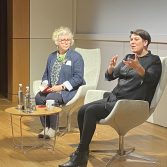 Start by identifying the primary and secondary purpose of the product, whether it’s protection, performance, status etc, and assess the product’s current linear lifecycle, from material extraction to end-of-life scenarios. From there we can work out how to transform it.
Start by identifying the primary and secondary purpose of the product, whether it’s protection, performance, status etc, and assess the product’s current linear lifecycle, from material extraction to end-of-life scenarios. From there we can work out how to transform it.
Leyla’s design toolkit features five main lifecycle stages. And data based lifecycle assessment tools can help map impacts to further enable the design process. There are plenty of tools out there from Plan A to Greenly and they can help build business arguments and justifications.
Design circular business models to underpin ‘product as service’ systems that focus on reuse. Consider everything from packaging design and material specifications to takeback programs, subscription services etc. And if you can’t make it reusable, how do you make it repairable, or enable materials to be recaptured and remanufactured?
Further design strategies from upcycling to recycling can help keep materials in the system for as long as possible. And if you can’t find a circular pathway then make sure design considers the product’s end of life destination. From there you must figure out how to implement the circular system in place of the linear system and manage the trade-offs. And don’t forget that you still need to make the product and service experience enjoyable to create consumer participation.
Ultimately, it’s about action. Right now.
